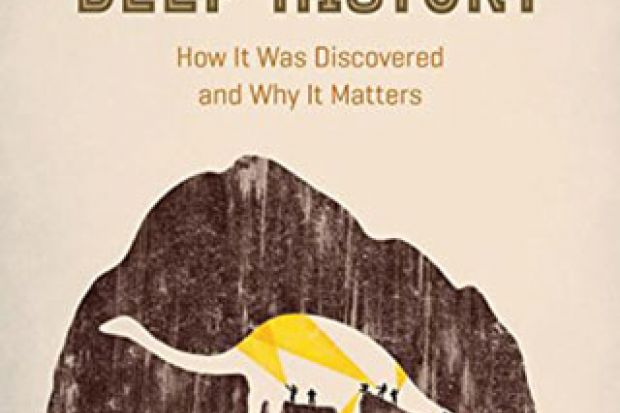In 1654 James Ussher, the renowned scholar, historian and Archbishop of Armagh, calculated the date of Creation as 23 October 4004 BC. Less than four centuries and a revolution in scientific thought later, the accepted age for planet Earth had expanded from just 6,000 to a colossal 4 billion years. Here, Martin Rudwick tells the remarkable story of how the history of our planet evolved in the light of new ideas about humans’ connection to nature, advances in scientific methodology, and the changing influence of the Christian faith on man’s beliefs about Earth’s past.
It’s fair to say that today we take knowledge about the Earth for granted. We learn at school that we’re one planet within a vast solar system, about how we and apes evolved from common ancestors and the mystery of the dinosaurs’ disappearance, and how oceans and continents are continually created and destroyed by moving plates powered by Earth’s internal engine. Yet each of these “big ideas” took decades or even centuries to emerge as developments in scientific thinking and reasoning – often in the form of leaps of faith, literally and metaphorically – enabled scientists and scholars to understand and interpret the evidence about Earth’s past hidden within the rock record.
Rudwick begins his story in the 17th century by revealing how Ussher’s infamous (and widely scorned) calculation emerged from rigorous scholarly practice, and hence reflects the workings of a true intellectual rather than the religious zealot he is often assumed to be. From here the reader embarks on a journey through time – both human and geological – to discover how Earth’s timescale became progressively lengthened by orders of magnitude as the biblical six days of creation gradually lost their literal meaning, and scholars began to shift their attention to investigating causality and the mechanics of Earth processes, rather than simply reconstructing sequences of events.
With the Enlightenment came new ways of thinking that brought a heightened curiosity in nature, and an interest in field investigation from which much new evidence about Earth’s past emerged. Throughout the 18th and 19th centuries, as fossil collections expanded and field observations became ever more sophisticated, so the realisation dawned that mankind had existed for only a tiny fraction of Earth’s most recent history. Early attempts to quantify Earth’s age were limited to the construction of mostly relative timescales with crude ages estimated from observed rates of present-day processes, until Ernest Rutherford’s discovery of radioactive half-life at the turn of the 20th century paved the way for new techniques that finally placed a numerical age on both specific geological formations and the Earth itself. From being seen simply as a backdrop to human activity, nature emerged as having its own inconceivably long history dominated by recurring cycles intermittently punctuated by catastrophic global events.
Earth’s Deep History is a long and complex story that has, as Rudwick admits, required a “drastic pruning of detail”. Nonetheless, he succeeds in weaving together a compelling account of how Earth’s timescale expanded to magnitudes far beyond those imagined by early scholars, and of the individuals responsible for advancing scientific thinking through their ideas and actions. But while the main chapters in Earth’s history are now widely accepted and largely uncontroversial, this is not the end of the story. Despite the disconnection between Genesis and geology, the roots of young-Earth creationism are spreading both geographically beyond the US, and to other religious fundamentalist movements. Although dismissed by Rudwick as a “bizarre sideshow”, the re-emergence of young-Earth creationism in the face of overwhelming scientific evidence to the contrary is nonetheless a frustrating state of affairs.
Earth’s Deep History: How It Was Discovered and Why It Matters
By Martin J. S. Rudwick
University of Chicago Press, 392pp, £21.00
ISBN 9780226203935 and 04093 (e-book)
Published 22 October 2014
Register to continue
Why register?
- Registration is free and only takes a moment
- Once registered, you can read 3 articles a month
- Sign up for our newsletter
Subscribe
Or subscribe for unlimited access to:
- Unlimited access to news, views, insights & reviews
- Digital editions
- Digital access to THE’s university and college rankings analysis
Already registered or a current subscriber? Login

